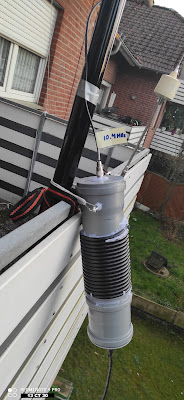One of the most questions which keeps coming up is about Charly Tango call signs.
People have been a bit confused listening to the air bands hearing Charly Tango stations and then have asked what these call signs are about. Most certain questions were "Do I need to get a Charly Tango call sign or do I need one anyways, do I have to pay for it, and if I want one where do I get one from ?"
First thing to let you know about that is as simple as if you're not an amateur radio call sign holder using ham radio frequency's you don't need a call sign to do the hobby such as CB-Radio !
These things of the past doesn't apply anymore today because there isn't any requirement anymore.
Now if you want to come back on radio you are free to name yourself like ever you want for example your first name is Peter from London you will be Peter from London which would be just fine. If you're Michel from Berlin then that's not at problem too or even Natasha from Moscow would be absolutely fine. Jason from Washington, DC or even Valtyr from Iceland, that's great.
You know, the thing is how to make yourself better recognizing by having a long distance chat on the radio which is called DX. This is the main point of why to use call signs on the radio.
So let's think you are having a chat with me at the 11 metre CB band. My call sign is 13 Charly Tango 30 and my name is Alex. I know a couple of guys who are named Alex too so the chance could be very high to catch another guy with the same name which could lead into confusion on the radio but it shouldn't happen if you are using a call sign which, such from Charly Tango usually is unique. Next point is that those call signs, where ever you apply for has a country code in front of it which is kind of equal like telephone numbers. Mine has got a 13 which stands for Germany so my locations country will be regognized just by telling my call sign. Now you are in example Carl from London, Ontario, Canada hearing me calling "CQ DX this is 13CT30" you suddenly know that I'm from Germany while on the other hand you might reply "Here is Carl from London" I probably think you're from the United Kingdom but not thinking about there is another London far away which would make this contact definitely worth it. To avoid those mistakes a call sign like those from Charly Tango definitely can help. We might also exchange QSL-cards but how should it be done properly without a call sign ?
You are free to do whatever you want. You want a DX-call sign, go ahead and get one but make sure you gonna chose the right one which matches for your needs. I guess there are still clubs out there who aren't free of charge which leads us to the next question:
"If I want a Charly Tango call sign do I have to pay for it ?" No, absolutely not !
If you decide to join the Charly Tango International DX-Group you will get a lifetime call sign with your membership for free. Since the old Borderland DX-Group is not registrated as an official association anymore there are no obligations to todays members of Charly Tango anymore.
With other words: A Charly Tango call sign is free for your lifetime.
If you want one then simply give our admin in Charly Tango a shout on his phone number +4916098486171 , use the register form by clicking the link at the Charly Tango homepage, or write an email to the webmaster.
Just make sure to apply with www.DX-CharlyTango.de which is the original Charly Tango DX-Group as I often state to watch for the letter "Y" in the name Charly but NOT "IE" ! You know it's just like fake news one different letter could let you fall into the trap of a fake group or just like in this case a stolen idea because you can't see any differences on the call signs.
It's also useful to have a call sign list available to look up call signs during or even after a chat on radio with a station who is registered with a DX-club like Charly Tango. That's pretty easy to look up just for the basic info about name and location as well as an activity status just in case you have missed this information during a QSO while the propergation got down or QRM level led you not to understand the station you have had a chat with.
There are many good points for having a call sign but like I've already mentioned it isn't required so it's your choice. For myself I've decided to use my CT call sign for DX while for local calls I'm using another one. Just like I said there are many ways of use but when it comes to if's and but's I myself prefer to have a call sign instead of not being heard with low signals in kinda noise jungles sometimes.
73's and good DX yours 13CT30, Alex









